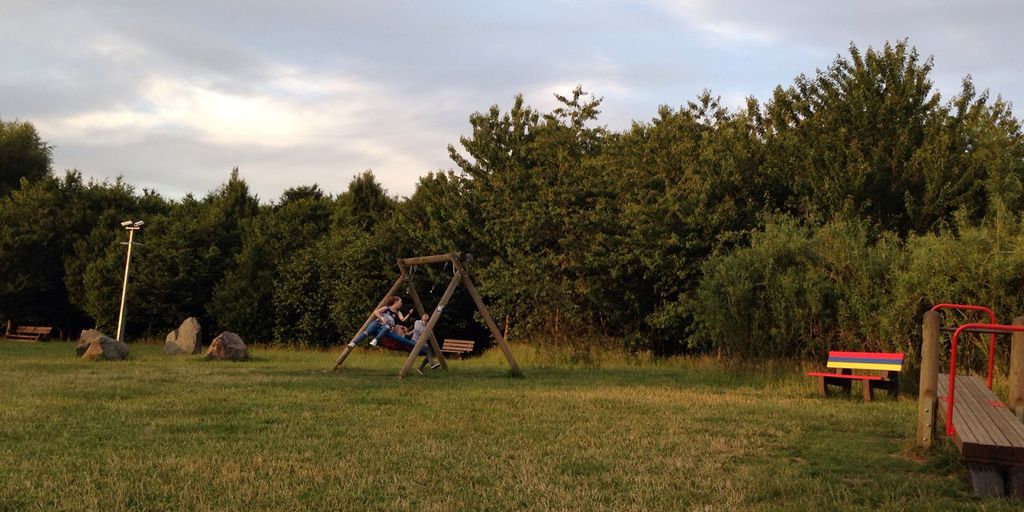
In today’s fast-paced world, maintaining a healthy work-life balance can be a real challenge. With the demands of work, family, and personal pursuits, it’s easy to become overwhelmed and stressed. However, achieving that delicate equilibrium between your professional and personal life is crucial for your overall well-being and happiness. In this blog, we’ll explore strategies for maintaining a healthy work-life balance, coping with job-related stress and burnout, and offer time management and productivity tips to help you lead a healthier, happier life.
Key Takeaways
- Set clear priorities to balance professional and personal goals effectively.
- Establish physical and digital boundaries to separate work from personal life.
- Incorporate self-care practices such as exercise, nutrition, and mindfulness into your daily routine.
- Utilize time management techniques and tools to enhance productivity and reduce stress.
- Build a support system with family, friends, and professional help to navigate challenges.
Setting Priorities for Better Work-Life Balance
Achieving a healthy work-life balance starts with setting clear priorities. Prioritizing your time is just as important as setting boundaries. When you prioritize your time, you are able to focus on the tasks that are most important.
Identifying Core Values
Identifying your core values is the first step in setting priorities. This means getting clear on who you are, what you want to achieve, and how you want to live your life. When you know what’s most important, you can find a balance that works for you.
Time Management Techniques
Effective time management techniques can help you make the most of your day. Consider using tools like calendars, to-do lists, and time-tracking apps to stay organized. The Pomodoro Technique, which involves working in focused intervals with breaks in between, can also be very effective.
Balancing Professional and Personal Goals
Balancing professional and personal goals requires a thoughtful approach. Make time for your family and personal life, and don’t be afraid to ask for help when needed. Remember, it’s not just about work; prioritizing fun and relaxation is equally important.
Instead of saying, ‘I don’t have time,’ try saying ‘it’s not a priority’ and see how that feels.
Creating Boundaries Between Work and Personal Life
Establishing Physical Boundaries
Creating physical boundaries is essential to prevent work from encroaching on your personal life. Designate a specific workspace in your home where you can focus solely on work-related tasks. This separation helps in mentally switching between work and personal modes, ensuring that you can fully engage in each.
Setting Digital Limits
In today’s digital age, it’s crucial to set limits on your digital devices to maintain a healthy work-life balance. Avoid checking work emails or taking calls outside of designated work hours. Use apps and tools to help you disconnect from work when you’re off the clock.
Communicating Boundaries to Others
Clearly communicate your boundaries to your colleagues, friends, and family. Let them know your work hours and when you are available for personal time. This helps in managing expectations and ensures that everyone respects your boundaries.
Establishing clear boundaries between work and personal life is vital for achieving a healthier, happier life. When you’re at work, focus on work-related tasks, and when you’re off the clock, give your personal life the attention it deserves.
The Role of Self-Care in Achieving Work-Life Balance
Self-care is crucial for mental and physical wellbeing. By prioritizing your personal life and taking care of yourself, you can reduce stress. This prevents negative health outcomes and helps you maintain a healthy balance between your work and personal lives.
Incorporating Exercise and Nutrition
Exercise and proper nutrition are foundational to self-care. Regular physical activity can boost your mood and energy levels, while a balanced diet ensures your body gets the nutrients it needs. Prioritizing these aspects can lead to a more productive and happier life.
Mindfulness and Relaxation Techniques
Mindfulness practices, such as meditation and deep-breathing exercises, can help you stay grounded and focused. Relaxation techniques, like yoga or even simple stretching, can alleviate stress and improve your overall well-being.
Achieving work-life balance is a continuous journey, not a destination. It requires regular reflection, adjustments, and a commitment to one’s wellbeing.
Making Time for Hobbies and Interests
Engaging in hobbies and interests outside of work is essential for a well-rounded life. Whether it’s reading, painting, or gardening, these activities provide a much-needed break from work-related stress and can significantly enhance your quality of life.
Effective Time Management Strategies

Using Tools and Apps
Utilize technology to streamline your tasks, manage your schedule, and stay organized. Leverage productivity tools and apps to make the most of your time. Embrace the way your brain works by using productivity hacks like a Pomodoro timer to work in short, focused bursts. Block out all other distractions so you can make the most of your time.
The Pomodoro Technique
The Pomodoro Technique involves working in short, focused intervals, typically 25 minutes, followed by a short break. This method helps maintain high levels of productivity and prevents burnout. Set blocks of time for different tasks, such as checking messages, taking meetings, and doing mentally-intensive work. Anchor these tasks around the times that you are personally more productive.
Delegating Tasks Efficiently
Delegate tasks when possible, and consider outsourcing tasks that do not require your direct involvement. This frees up your time for more critical responsibilities. Don’t be afraid to ask for help when needed. By delegating effectively, you can focus on what truly matters and improve your work-life balance.
Instead of saying, ‘I don’t have time,’ try saying ‘it’s not a priority’ and see how that feels.
Building a Support System
Seeking Help from Family and Friends
Reaching out to friends and family for emotional support is crucial. Being able to talk openly and honestly about your feelings can help you remember to focus on your priorities. People with stronger support systems have more aggressive immune responses to illnesses than those who lack such support.
Professional Support and Counseling
Take advantage of your company’s Employee Assistance Program (EAP). Many organizations offer resources through an EAP, which can save you precious time by providing guidance on issues like where to find a daycare center and caretaking for an elderly parent, as well as referrals to mental health and other services.
Creating a Supportive Work Environment
Open communication and purposeful action can cultivate a healthier, more balanced workplace. With these measures, employers can aim to traverse this new talent landscape effectively. Don’t over commit. If you’re overscheduled with activities, learn to say, “no.” Shed the superman/superwoman urge!
The Importance of Flexibility and Adaptability
In today’s fast-paced world, the ability to embrace change is crucial. Flexibility and adaptability are key traits that allow individuals to navigate through life’s uncertainties with ease. Whether it’s a shift in job responsibilities or unexpected personal events, being open to change can lead to personal growth and new opportunities.
Flexible work arrangements, such as remote work or flexible hours, provide employees with the autonomy to create schedules that suit their personal lives. This not only enhances job satisfaction but also boosts productivity. Research confirms that flexibility is indispensable for striking a harmonious balance between personal and work commitments.
Life is full of unexpected challenges, and having the ability to adapt is essential. This might involve adjusting your schedule to accommodate unforeseen circumstances or finding new ways to manage stress. Implementing strategies like mindfulness and regular physical activity can help in maintaining a balanced life.
In summary, a work-life balance offers employees a richer, more fulfilling life experience.
Recognizing and Addressing Burnout
Identifying Signs of Burnout
Burnout is characterized by physical, emotional, or mental exhaustion. Recognizing the official definition of burnout is the first step in addressing it. Common signs include chronic fatigue, irritability, and a sense of detachment from work. It’s crucial to identify these symptoms early to prevent further deterioration.
Preventative Measures
Preventing burnout involves creating small boundaries between work and personal life. For example, resolve not to talk about work on your days off. Working toward greater balance between professional and personal responsibilities can significantly reduce burnout. Regular self-care activities, such as exercise and adequate sleep, are essential.
Recovery and Self-Care
Recovery from burnout requires a multifaceted approach. Start by prioritizing self-care and seeking support from family and friends. Professional counseling can also be beneficial. Remember, recovery is a gradual process, and it’s important to be patient with yourself.
Burnout can affect every aspect of our lives, but with the right strategies, it is avoidable. Make efforts to ensure this doesn’t happen to you.
Conclusion
In conclusion, achieving a healthy work-life balance is a continuous journey that requires conscious effort and self-awareness. By implementing the strategies and techniques discussed in this article, you can reduce stress, prevent burnout, and become more productive, ultimately leading to a happier and more fulfilling life. Remember, your well-being is a priority, and finding the right balance will not only benefit you but also enhance your performance at work and your relationships in your personal life. Despite the obstacles, being proactive and prioritizing personal activities can help you find a healthy equilibrium. Your journey to a balanced life is unique, and it’s important to find what works best for you.
Frequently Asked Questions
What are the key strategies for achieving work-life balance?
Key strategies include prioritizing your time, setting clear boundaries between work and personal life, incorporating self-care, using effective time management techniques, building a support system, and being flexible and adaptable.
How can I set priorities to improve my work-life balance?
Identify your core values, set both professional and personal goals, and use time management techniques to allocate your time effectively. Make sure to prioritize activities that align with your values and contribute to your well-being.
What are some effective ways to create boundaries between work and personal life?
Establish physical boundaries by designating specific workspaces, set digital limits by controlling your online availability, and communicate your boundaries clearly to others to ensure they respect your personal time.
Why is self-care important for work-life balance?
Self-care is crucial because it helps you maintain your physical and mental health, reduces stress, and prevents burnout. Incorporating exercise, nutrition, mindfulness, and hobbies into your routine can significantly improve your overall well-being.
What tools and techniques can help with time management?
Tools like calendars, to-do lists, and time-tracking apps can help you manage your time effectively. Techniques such as the Pomodoro Technique and delegating tasks can also improve your productivity and ensure you have time for personal activities.
How can I recognize and address burnout?
Recognize the signs of burnout, such as chronic fatigue, irritability, and decreased productivity. Take preventative measures like setting boundaries, practicing self-care, and seeking support. If you’re already experiencing burnout, focus on recovery through rest, relaxation, and professional help if needed.






